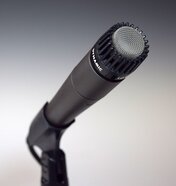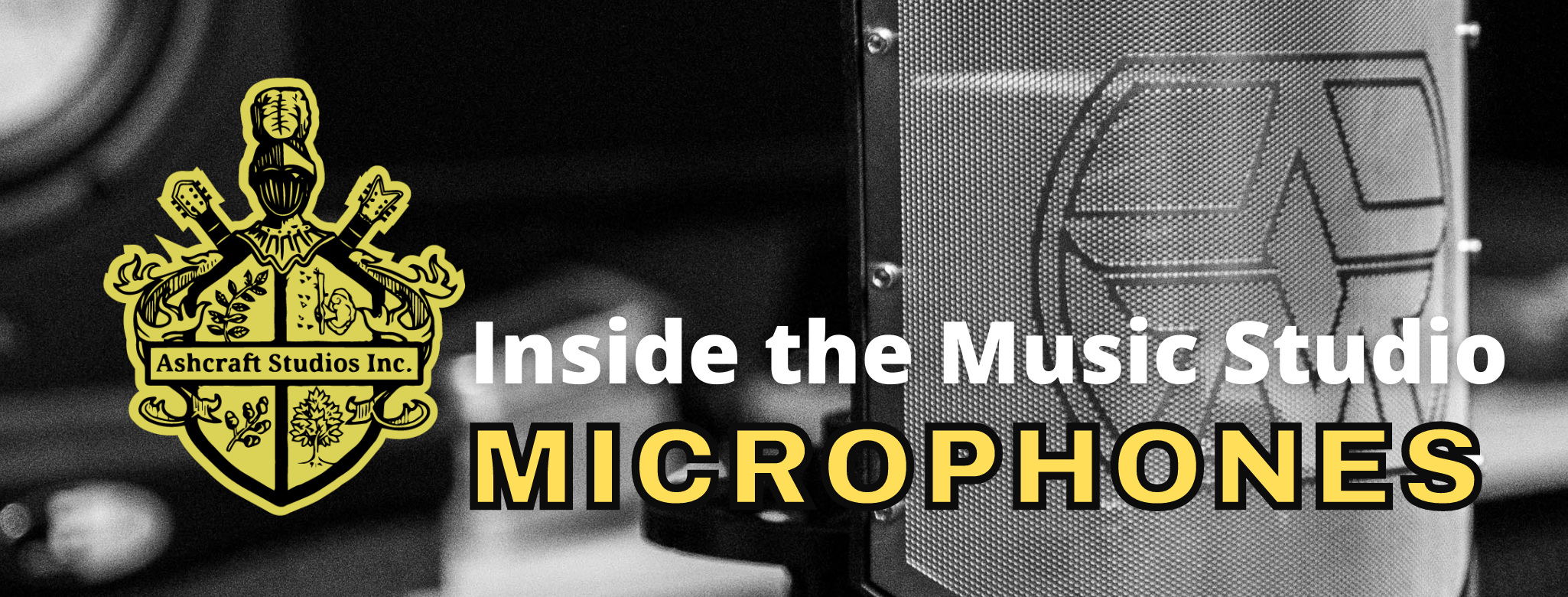|
Today on Ashcraft’s Inside the Music Studio let’s talk microphones. A must have for any studio setup; microphones are the lifeline between the audio source and the recording. Without a microphone no sound could be recorded and saved. But what is a microphone exactly? How do they work, and what kinds are there? Let’s find out.
Microphones
According to Oxford Languages, a microphone is “an instrument for converting sound waves into electrical energy variations which may then be amplified, transmitted, or recorded.” In short, it’s a tool that takes in audio and can either record or alter the sounds. Microphones work by converting energy from sound waves into electrical energy. While different microphones do this differently, the common factor between all microphones is the diaphragm. Soundwaves enter the microphone where they vibrate within the diaphragm resulting in an electrical current or audio signal.
Microphones have become an integral part of our lives, being present in everything ranging from telephones, to baby monitors. With the first microphone being invented in 1876 by Alexander Graham Bell, microphones have come a long way. While Bell’s first microphone was not considered to be practical, regular use of the microphone became popular with Thomas Alva Edison’s invention of a carbon microphone in 1886. E.C. Wente of Bell Laboratories later developed the first condenser microphone in 1916 which were used for radio broadcasting and sound motion pictures. Types of Microphones
Dynamic Microphones

Affordable and versatile, dynamic mics are a go to for any microphone set up. Also known as moving coil microphones, dynamic mics are similar to that of a loudspeaker, but in reverse. Sound waves enter the microphone through a diaphragm which then passes through a coil. The soundwaves travel back and forth along the coil and through the magnet creating an electrical current otherwise known as the audio signal.
Condenser Microphones

Condenser microphones use a capacitator to store electrostatic energy and convert it into electrical energy. Because of this electrical component a power source such as a battery or an external source is required for the microphone to function properly. As a result the audio signal is stronger than that of a dynamic microphone. While the stronger audio signal makes this microphone a better choice for capturing more subtle sounds, it is not a great choice for high volume work because their sensitivity will make the microphone more prone to distortion.
Ribbon Microphones

Technically a form of dynamic microphone, the ribbon microphone is best known for its vintage tone. Like other dynamic microphones, ribbon mics use a diaphragm, coil, and magnet to convert sound energy into an audio signal. The difference, however, relies in the use of a small strip of metal, often aluminum, as both diaphragm and transducer. This strip offers greater sensitivity to sound as you would expect from a condenser, but with an entirely different character.
Never miss a thing and join our mailing list today.
Stay Connected. Follow us on Social Media.  
0 Comments
Leave a Reply. |


 RSS Feed
RSS Feed
